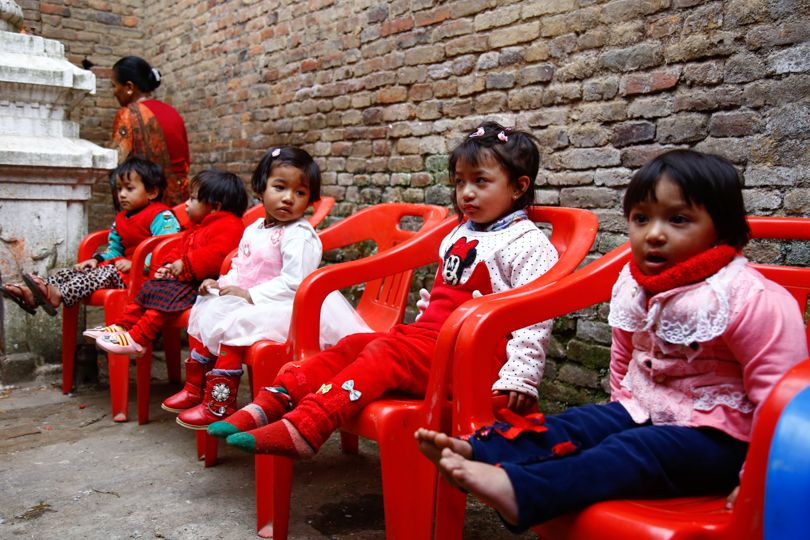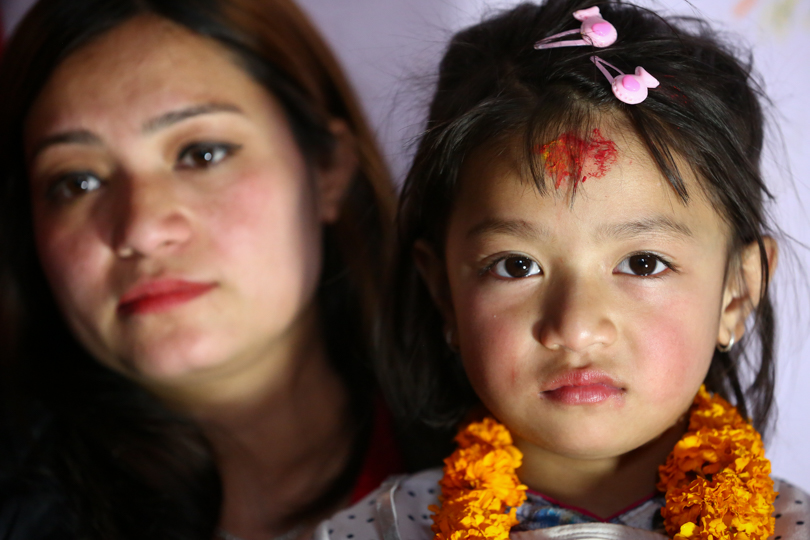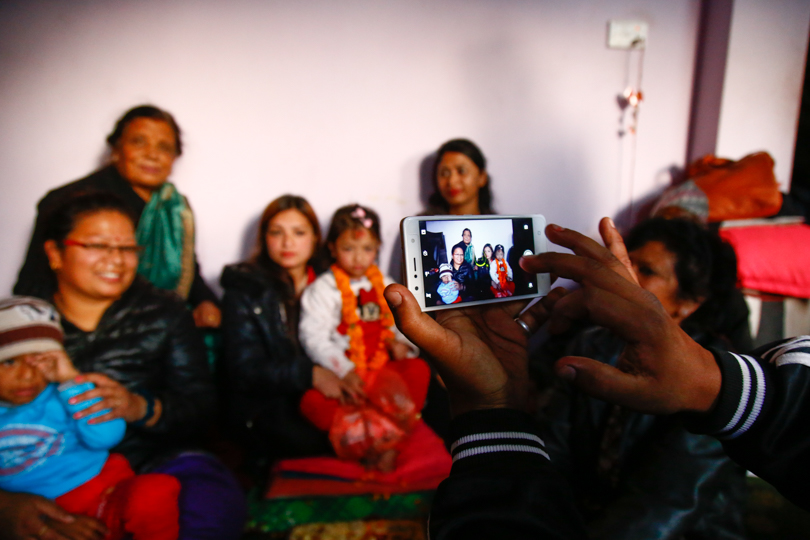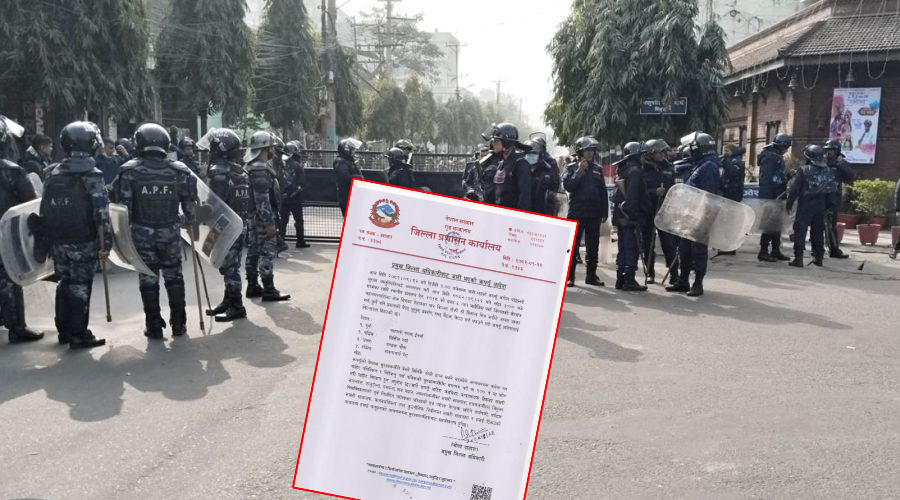
Five young girls were brought to the Ratnakar Mahavihar in Gabahal, Lalitpur (Patan), on the afternoon of February 5. Some of the girls are as young as two.
The excitement in their faces is visible; why not? One of them will take charge as the Kumari of Patan, one of the three medieval kingdoms of the Kathmandu Valley.
As news spreads that Patan getting a new Kumari, the otherwise deserted Ratnakar Mahavihar, is full of people. Photographers, along with locals, assembled outside just to get a shot of the candidates selected to take the coveted position.
The five girls are seated in the inner courtyard and as the procession starts, everyone is asked to wait outside–only the children’s parents and members of the guthi are allowed to witness the rituals.

As those rituals go on I am told more about this practice. I find out that the Kumari of Patan is selected from within the Bajracharya clan. When the ruling Kumari reaches puberty, the process to select a new one is started. There are little over 100 families in the clan and those willing to make their child the Kumari can submit their child’s name and her birth chart to the guthi. The guthi then analyses the chart to see who among the girls is worthy.
The short-listed candidates are called to the Ratnakar Mahavihar where they sit through Vedic rituals. The lady members of the guthi observe the candidates carefully and choose the new Kumari.

It is said that the Kumari must have perfect eyes, teeth, and must be free of scars and blemishes. She should also be patient. It is believed that the Kumari should have 32 traits (lakshin).
“This process has been going on from the time of the Malla kings and has helped us find the right person. Even this year we shortlisted two who we thought was best fit to become our Kumari,” says Sanjay Sharma Rajopadhaya, secretary at the Tajelu Mandir Management Committee.

With the dawn of the 21st century, many families have stopped taking part in this practice. Most families don’t want to be a part of this because they feel that the state doesn’t look after them well. “In 2014 only two girls showed up which is why I’m glad this time the number was good, says Rajopadhaya.
“Some feel that it a practice that is on the verge of ending as it doesn’t have a place in the 21st century. Others think that we need to carry on this tradition because as a country we are culturally rich. We need to preserve our culture for the new generation so that the can learn and know more about it,” he further adds.

As dusk arrives, the rituals at Ratnakar Mahavihar ends.
After the candidates’ nature and characteristics are evaluated, they are then taken to the house of the head priest of Taleju Temple where more tantric rituals are carried out. The girls’ bodies are also examined to see if they have any bruises or marks. This is done by the priest’s wife. She determines who the next Kumari will be.
Outside the priest’s house near Pim Bahal an anxious crowd waits for the announcement.

Photographers are standing by in position and ready with their cameras.
The announcement is made as a member of the guthi announces that five-year-old Nihira Bajracharya has been chosen. There is smile on her face as her mother picks her up in her arms.
“The new Living Goddess is here.”
Photos: Milan Adhikari
























